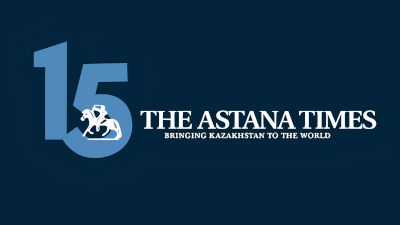What is digital diplomacy, and how can Kazakhstan leverage it to build a sustainable and strong country brand? How can the inevitable digitalization process bring the work of embassies, diplomats, ministry of foreign affairs, and other stakeholders to a new qualitative level? These are the questions that, as a young diplomat curious about the tech world, have got me on the quest of exploring this topic in depth.

ADEL ORAZALIYEVA.
In current realities, the role of a diplomat is evolving to adapt to new geopolitical and technological contexts. Many experts from the diplomatic community are already utilizing the so-called “Digiplomacy” or “eDiplomacy” tools daily, from negotiating through Zoom to actively leading professional social media accounts on various platforms. However, it usually happens naturally, without fully comprehending the subject’s importance and benefits in promoting the country’s image. All diplomats need a holistic and sustainable approach to leverage digital tools fully.
As stated in the Oxford Handbook, digital diplomacy refers to the use of digital technologies, such as social media and other online platforms, including virtual communication channels and the metaverse, by ministries of foreign affairs and international organizations to communicate with each other and the general public, conduct diplomacy, and advance their foreign policy goals.
Why does it matter for Kazakhstan? Our country is a truly unique land that blends deeply rooted traditional values with growing strengths in digitalization, logistics, investment, and more. We connect East and the West, act as Eurasia transit hub, hold 24th rank in the global e-government development index and many more. Yet, sometimes we struggle with articulating our victories in modern digital realities. And eDiplomacy might be one of the keys to our speakerphone as modern diplomats.
Looking at the experiences of other countries, one of the first instances of a bold eDiplomacy initiative was launched by Sweden, recreating its embassy on Second Life (multiplayer virtual world) back in 2007. Even though it lasted for a short period, it has created a valuable precedent for promoting the state’s image and culture in virtual reality.
France has also embraced digital diplomacy, appointing an Ambassador for Digital Affairs within its Ministry for Europe and Foreign Affairs. Since 2018, Henri Verdier has led and coordinated France’s efforts, demonstrating how digital strategies can enhance international relations.
For example, the World Health Organization aimed to communicate with younger audiences, collaborated with TikTok to provide users with health-related information and educational content on health, and shared precautions during the pandemic.
Similarly, the International Campaign to Abolish Nuclear Weapons (ICAN) actively utilizes TikTok to reach a diverse audience, including academics, diplomats, and young activists, united by a shared vision of a world free from the threat of nuclear weapons.
TikTok’s unique appeal lies in its ability to present educational content dynamically and engagingly, blending serious topics with a creative and accessible approach. This and other platforms are not only for saying something but also for listening to and understanding the voices of others, particularly the youth.
Researchers Corneliu Bjola, Ilan Manor argue that diplomacy is about to enter a new phase, which we call hybrid diplomacy, in which physical and virtual engagements are expected to integrate, complement and empower each other.
Diplomats around the world must not only adapt to the digital age but also strive to excel, setting a higher standard than their international counterparts. With Kazakhstan’s rich talent pool, the country has the opportunity to harness its soft power and storytelling by offering specialized training for diplomats and other professionals in digital tools. Once these teams are well-equipped, the next step would be to establish a dedicated department or unit focused on digital diplomacy.
Apart from crafting soft stories and creating visual works, it is important to educate employees on techniques to mitigate the spread of misinformation, detect deep fakes, and understand basic cybersecurity practices.
According to a recent study, only 61 percent of participants could distinguish between real and generated pictures. The study involved 260 participants and provided them with 20 unlabeled pictures: 10 of which were of real people obtained from Google searches, and the other 10 generated by two commonly used AI programs.
While the consequences might not always seem severe, deep fakes can pose significant risks in foreign affairs and politics. Civil servants must receive proper training to recognize and address these threats effectively.
On the other hand, Kazakhstan has an opportunity to harness the potential of AI image and video generation to enhance its global image. The country could create captivating content for platforms like Instagram and TikTok by tapping into its rich nomadic heritage and stunning natural landscapes. As technology evolves, individual creators will increasingly produce numerous creative works on their own—so why shouldn’t diplomats, with their deep understanding of what makes their country unique, lead the way in showcasing Kazakhstan to the world? These and other creative approaches to eDiplomacy should be explored and gradually put into practice.
As the world changes at an unprecedented pace, Kazakhstan must develop digital momentum, amplify its voice, foster cultural connections, and lead by example on the global innovation stage. Now is the time to act boldly and with purpose.


